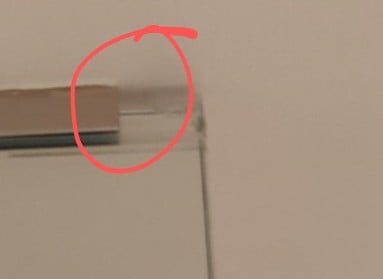I’ll post some links, but it’s a pretty busy week for me already, so give me some time.
- 0 Posts
- 252 Comments
An interrupt is an input that can be triggered to interrupt normal execution. It is used for e. g. hardware devices to signal the processor something has happened that requires timely processing, so that real-time behavior can be achieved (for variable definitions of real-time). Interrupts can also be triggered by software, and this explanation is a gross oversimplification, but that information is what is most likely relevant and interesting for your case at this point.
The commands you posted will sort the interrupts and output the one with the highest count (via head -1), thereby determining the interrupt that gets triggered the most. It will then disable that interrupt via the user-space interface to the ACPI interrupts.
One of the goals of ACPI is to provide a kind of general hardware abstraction without knowing the particular details about each and every hardware device. This is facilitated by offering (among other things), general purpose events - GPEs. One of these GPEs is being triggered a lot, and the processing of that interrupt is what causes your CPU spikes.
The changes you made will not persist after a reboot.
Since this is handled by kworker, you could try and investigate further via the workqueue tools: https://github.com/torvalds/linux/tree/master/tools/workqueue
In general, Linux will detect if excessive GPEs are generated (look for the term “GPE storm” in your kernel log) and stop handling the interrupts by switching to polling. If that happens, or if the interrupts are manually disabled, the system might not react to certain events in a timely manner. What that means for each particular case depends on what the interrupts are being responsible for - hard to tell without additional details.

 21·16 days ago
21·16 days agoIt’s not like Bluetooth started demanding location permissions, the conceptual model of the permission was revised: having access Bluetooth means an app could determine your location via a form of lateration.
In earlier versions of smartphone operating systems, this was not transparent to users lacking the technical background, so Bluetooth also requiring location access is actually an attempt at making users aware of that. I’m not an iOS developer, so I can’t comment on iPhones, but on Android versions prior to 11, having access to Bluetooth meant an app would be able to determine your location.
Today, you can require the permission
ACCESS_FINE_LOCATION, which expresses that your app might use Bluetooth to obtain location information on Android. Also, if you’re just scanning for nearby devices to connect your app to, but don’t want users to be confused why your smart fridge app needs to know your precise location, you can declare a permission flag (neverForLocation) and Android will strip beacon information from the scan results, better asserting your intentions.So, overall: no, there is nothing nefarious going on, it was always possible to determine your location via Bluetooth, and the update to the permission model was an honest improvement that actually benefits you as user.
Now, there are still plenty of shady apps around, and apps that are poorly written - don’t use those.

 36·19 days ago
36·19 days agoRight? Cover a fucking donut with mayonnaise, serve it on a single leaf of lettuce - boom, salad.
I’m so in on this conversation.
honey bees are bad for pollinators
Hm? What do you mean?
From this paper:
A. mellifera appears to be the most important, single species of pollinator across the natural systems studied, owing to its wide distribution, generalist foraging behaviour and competence as a pollinator.
This is a genuine question btw.
 2·1 month ago
2·1 month agoOh hey, I just saw you had already posted pretty much the same recommendation I had in mind. I’d personally 3d print an attachment, but your solution is readily available for everyone and cheap. Kudos!
 3·1 month ago
3·1 month agoGranite counter tops also rest on a sturdy base, the caulk used to attach them doesn’t have to resist a lot of force trying to push the slab around, the caulk is mostly there to prevent liquids spilling into the cabinets and to provide a decent appearance. Yes, the caulk also somewhat attaches the slab, but keep in mind how hard it is to move to begin with, given the weight of the counter top.
Here, the weight of the glass door pulls the panel out of the rails via the hinges. Silicone won’t provide a lasting solution.
 7·1 month ago
7·1 month agoI can only confirm what ballskicker and Shadow said - I’d remove the old caulk both mechanically and with the help of a solvent and then caulk it back in.
However, I’m also pretty sure it will eventually sag again without the help of a retaining mechanism.
Given the pictures you posted (which might not provide the full context), I assume someone really just caulked a glass panel into the profiles and left it at that. I assume you would like to avoid drilling the glass (can be done, but is tricky and has the potential to create a mess pretty quickly), so I’d simply manufacture a retaining cap that closes off the profile and holds the glass panel in place. I’d drill a hole into the ceiling to hold the cap in place, or into the profile, depending on the material and the remaining situation at hand.
I’m talking about mounting that right here, after sliding the glass back in / caulking, of couse:

If I remember correctly, you should be able to just install the GitHub version.

 2611·1 month ago
2611·1 month agoHonestly, if you’re in the audience for Thunderbird on Android, you probably also want to have a look at FairMail
instead.Edit: phrasing
I shudder to think OP’s post was written by an actual person…
Jokes on you, I look her up once a year to see what she ended up doing. I’m 100% her name is Danielle.

 4·1 month ago
4·1 month agoYes. You have to go and look for business display panels, e. g. those used for menus in restaurants, fast food chains, display stands etc.

 5·2 months ago
5·2 months agoThis, however, is about diagnostics, i. e. annotating delete with a reason (message) to express developer intent when deleting a function, not about memory management.

 3·2 months ago
3·2 months agoOh, I did grow up before video games were a thing, so I am aware of how CRTs worked. You just made it sound like CRTs would somehow provide tactile feedback while gaming, which I couldn’t place at all, given the context.

 51·2 months ago
51·2 months agoSorry, tactile response from a CRT?





What are your requirements? I liked CalenGoo, I can live with aCalendar and BusinessCalendar.